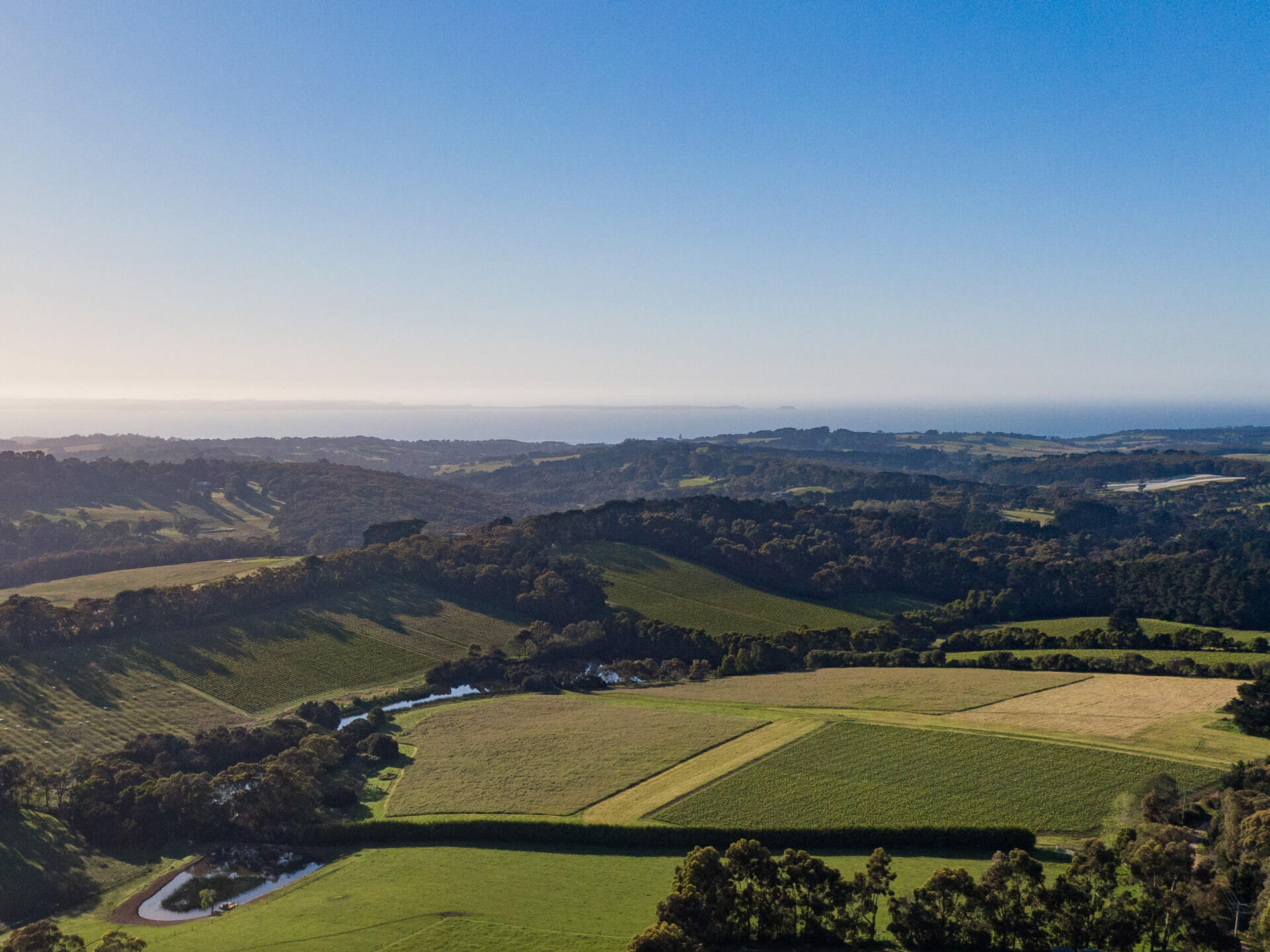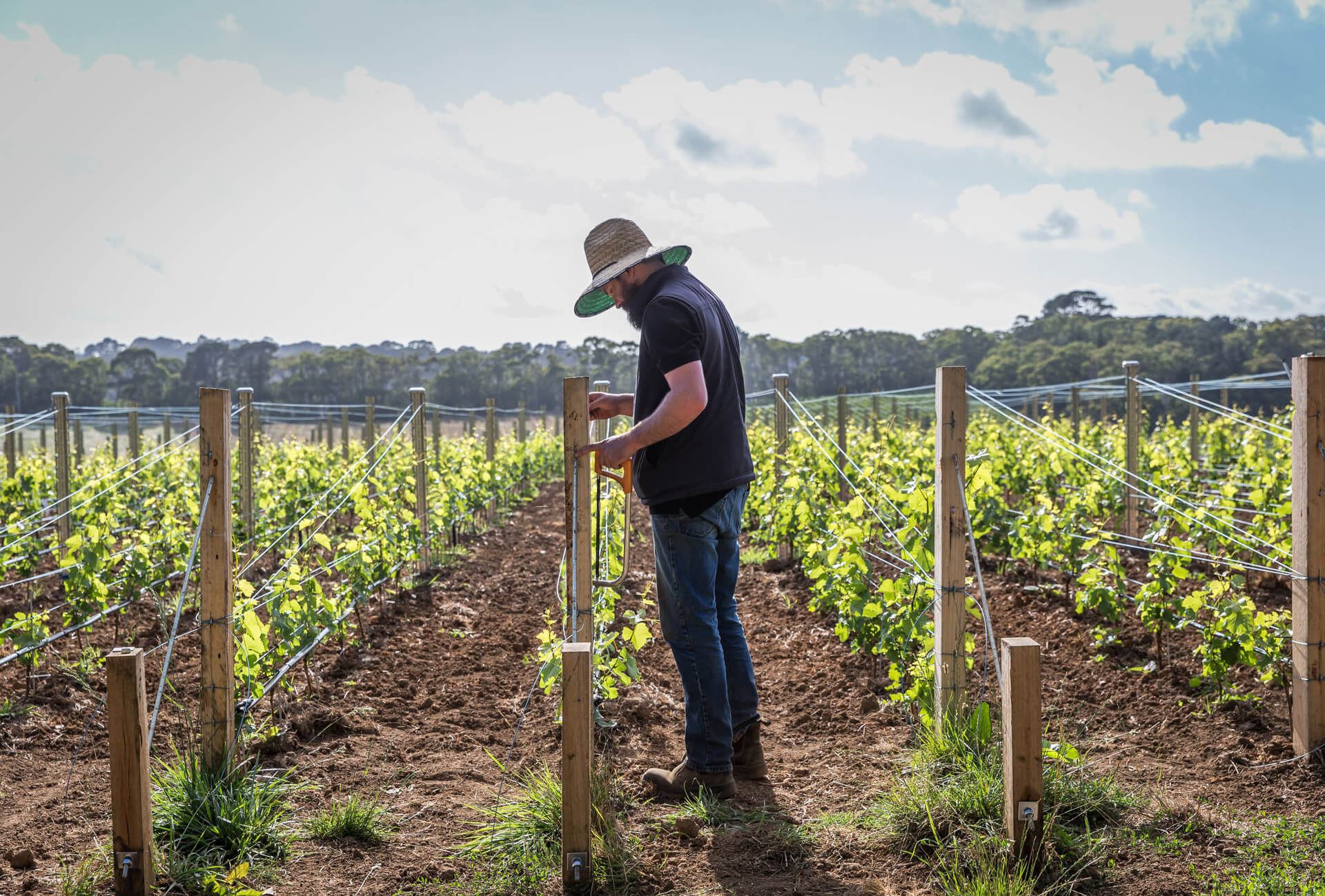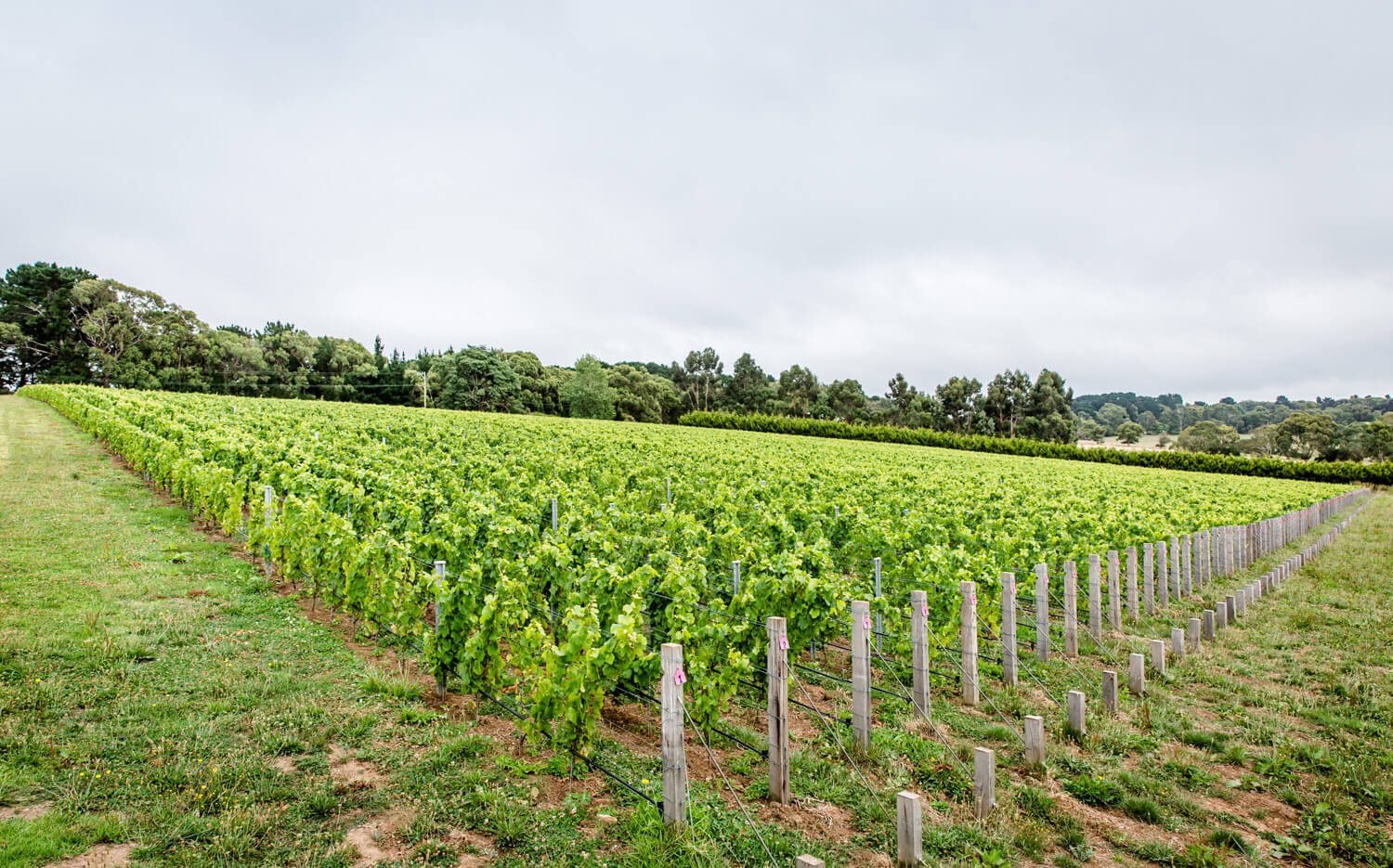Ten Minutes by Tractor’s reputation is built on articulating the differences between their four key vineyards with single-vineyard expressions of chardonnay and pinot noir, along with broader regional expressions and separate bottlings that reflect the lower elevation sites as well as higher elevation sites of the Mornington Peninsula. In 2016, they planted arguably the boldest venture for the region, with a high-density planting of pinot noir across just under 1.5 hectares. And while those vines are too young to turn out a single site offering, the early results are creating considerable excitement amongst the viticulture and winemaking teams.
Working across their varied blocks, Ten Minutes by Tractor is inked in as a Mornington Peninsula producer of elite stature, but the newest vineyard promises to elevate their status even higher. Planted at over 12,000 vines per hectare – an anomaly for the area – the new Spedding Vineyard is a no-expense-spared venture to test the viticultural boundaries of the region.
The vineyard, so named after Ten Minutes by Tractor’s owners, was planted in 2016 solely to pinot noir. “We have four different clones across the 1.48 hectares planted to a 12,120 vines/ha density,” says winemaker and vineyard manager Imogen Dillon. “It was the first vineyard planted on the Mornington Peninsula at this density level. The rich Main Ridge soils and the gentle slope and orientation provide an exceptional site for a vineyard, one that Martin and Karen Spedding spent years searching for.”
Producing the first viable crop in 2019, that wine was included in the estate blend, as was the 2020, which came from a low-yielding year, making a solo bottling impractical. The ambitions and the potential for the fruit are much higher, though. “From the wines we have seen already, we firmly believe that we will be able to produce a pinot noir of exceptional quality, poise and distinction that will sit above our Single Vineyard range,” says winemaker Imogen Dillon.
The diversity of sites across the portfolio necessitates a highly individual approach, notes Dillon, and none more so than with the Spedding Vineyard. “The main focus on the Spedding vineyard is to always be challenging the way we are operating: what can we change to make the management of this site more efficient but at the same time producing even better results in the fruit. We know we can get some beautiful fruit that is fine and balanced, but over the last few years disease pressure has been higher than most with La Niña and we have had to adapt our canopy management and strategy in general to combat this.”
That approach has seen Dillon and Ryan Chabin, who works alongside her, lifting the cordon wire to create more airflow in the canopy, which helps mitigate some disease issues. “Canopy management is critical,” She says. “We are constantly looking at the air flow on the site and how we can keep the canopy as open as possible. Our Main Ridge soils are the rich red ferrosols with a clay base, so we have no problem with growth at this site. Site management here is key and different to every other site we have.”
Ten Minutes by Tractor have also signed up to Sustainable Winegrowing Australia to use benchmarking data to work towards more measurably sustainable practices. They have reduced their diesel by limiting tractor passes, and their compact Niko tractor reduces soil compaction. Under-vine and mid-row mulching are being trialed to reduce cultivation of the soils and to retain sequestered carbon in an attempt to lessen their carbon production.
“We are always thinking about how we can more sustainable,” says Dillon. “We accept that our carbon footprint will play a role in climate change and that we, as a company, can always look to more sustainable ways of operation within our vineyards and in our business in general. How we can look after the land and the earth by encouraging nature to work at its best and therefore reducing the impact that we, as growers, are having.”
Encouraging diversity in the plants that grow under and between the vines is also being employed to attract the right kind of insects. “Biodiversity is key,” she says. “The understanding of our soil health in and around the site, why we have the weeds we have, deficiencies and the beneficial insects that can work alongside us and for us. If we can improve the nutrient cycling of the soil and reduce the amount of synthetics that we are incorporating into our program then we can start to work with nature instead of against it. This process includes the surroundings on our site, not just the area where the vines are planted.”
A high-density site also brings other challenges. “The narrow row spacing means we are limited with what machinery we can use, but it also keeps us up to date with researching new technology and the options that are out there for agriculture,” says Dillon. “We are looking at instruments that can fit through our 1.1 metre row spacing to enable us to direct drill cover crops to create that biodiversity and also continue to improve our soil health and therefore the health of the vines.”
Having vines so closely spaced can have a big quality payoff, but getting those vines to perform across the site is no straightforward process. “As a high-density site our main focus was to create that balance in the vines, where they compete with each other in a small area and every element of the growing process is in tune with each other,” says Dillon.
And While the Spedding Vineyard is very much a work in progress, she says the future is rosy. “I think we are already seeing incredible balance in the parcels of wine produced from this site. The tannins are fine and detailed, and the fruit produces incredible aromatics and perfume. The depth and structure seem beyond what you would normally see from a first or second crop from a standard planting.”





